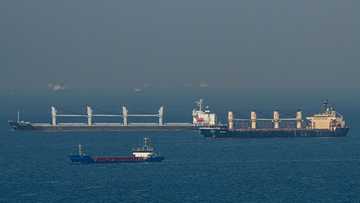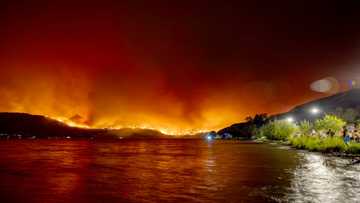AFP Fact Check: Fukushima wastewater release spawns misinformation

Source: AFP
Don't miss out! Get your daily dose of sports news straight to your phone. Join YEN's Sports News channel on WhatsApp now!
Japan's release of wastewater from the stricken Fukushima nuclear plant has unleashed a wave of misinformation, with AFP debunking false claims of a radioactive Pacific Ocean that have been viewed millions of times.
Some of the content has even been circulated by Chinese state media, including AI-generated images of a nuclear-powered Godzilla rising from the seas.
China has banned all seafood imports from Japan and condemned the release, which began last month, despite it being declared safe by the UN nuclear watchdog and other international experts.
Tokyo has said its citizens in China and businesses in Japan have experienced a spike in harassment, including a brick thrown at its embassy in Beijing.
From mutated monsters to a looming aquatic armageddon, AFP Fact Check has debunked some of the most widely proliferated claims arising from Japan's wastewater release.
A radioactive Pacific
Social media posts on TikTok, Weibo, Facebook and elsewhere shared a graphic with claims the wastewater would contaminate most of the Pacific Ocean within 57 days.
PAY ATTENTION: Click “See First” under the “Following” tab to see YEN.com.gh News on your News Feed!
The posts, mainly from China and South Korea but also circulated within Japan, shared a graphic from the 2011 Fukushima disaster, when a tsunami knocked out three reactors in one of the world's worst atomic accidents.
A hashtag associated with the graphic on Weibo generated 700 million views, and the animation was shared thousands of times on other platforms.
The graphic was also used by Chinese state media, including CCTV and CGTN.
But the animation, showing a model simulation of Caesium-137 dispersed into the Pacific following the 2011 nuclear accident, was taken from a 2012 study.
Erik Behrens, the lead author of the study, conducted by the GEOMAR Helmholtz Centre for Ocean Research Kiel, told AFP it "only captures the initial release of 137-Cs during the first few weeks after the meltdown occurred and was not made for any long-term release scenarios".
Sea of dead fish
A YouTube video post claimed to show thousands of dead fish washing up in the waters around Fukushima after the treated wastewater release began, reeling in more than 150,000 views.
Facebook and TikTok posts recirculating the video have also seen substantial reach.
China and Hong Kong have banned seafood imports from Japan and Japanese businesses have been bombarded with thousands of nuisance calls from China.
Fish merchants have also been pelted with comments doubting the safety of their products.
China's state news agency CGTN even produced a musical parody claiming Japan was pumping "polluted water and poisoned fish" into the sea.
But an AFP Fact Check investigation shows the fish video dates back to February, when a large number of sardines washed up on the shores of Itoigawa City on the west coast of Japan.
Fukushima is on the east side of the island.
Tsunami wave
Another series of social media posts shared around the time Japan was preparing for the release claimed to show the rapid spread of radioactive substances in the ocean.
The original Korean-language post claimed Japan was unleashing "The destruction of the Earth, geocide".
It was widely reshared on Facebook in both Korean and Chinese languages.
Various posts using the graphic have gained traction elsewhere, including on X, formerly known as Twitter, where it was circulated by Chinese businessman Sou Bunshu and viewed over 800,000 times.
But the posts misleadingly used a US National Oceanic and Atmospheric Administration graphic of the maximum wave heights of the 2011 tsunami.
Black water
In a video posted to Weibo, a stream of black sludge is seen released into the ocean, with the user claiming it is wastewater from Fukushima.
"Japan is discharging nuclear wastewater. Will it affect the ecology and life in our country?" the Chinese-language caption asks.
The original post received over 16,000 views and the content was seen a further 800,000 times across Facebook, YouTube, Weibo, X and TikTok's Chinese version Douyin.
But the video was actually filmed in Mexico and was debunked as part of an AFP Fact Check in 2020.
Mexico's National Water Commission said at the time that it had filed a criminal complaint against the agency responsible for municipal sewage and wastewater in Acapulco.
1. https://factcheck.afp.com/doc.afp.com.33TZ2VZ
2. https://factcheck.afp.com/doc.afp.com.33TR33E
3. https://factcheck.afp.com/doc.afp.com.33TT49B
4. https://factcheck.afp.com/doc.afp.com.33TT8AM
New feature: Сheck out news that is picked for YOU ➡️ click on “Recommended for you” and enjoy!
Source: AFP





